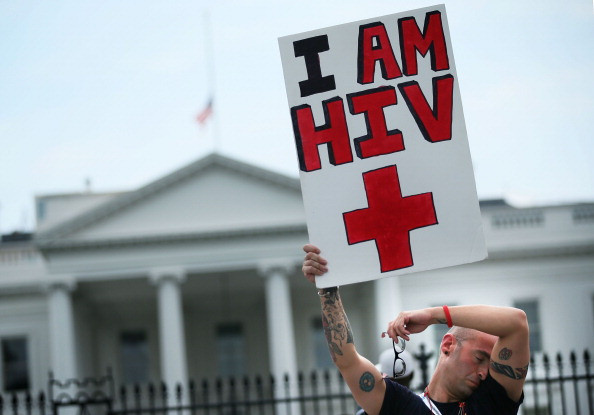Five of the biggest myths about HIV - and how you can debunk them
HIV is not passed on via casual contact or saliva.

To many people, HIV is perhaps one of the scariest virus, and learning you have been infected can sound like a death sentence. But this is not the case anymore.
The fact is there are many misconceptions about HIV and AIDS - the last, most severe stage of the HIV infection. A lot of people are still unaware of how the virus is passed on, how it affects the body and what can be done to live a normal, healthy life once you have been infected.
Here's how to debunk the most common myths that surround HIV.
Myth: You can get HIV by kissing someone who is infected.
Evidence has shown that HIV is spread through the exchange of bodily fluids such as blood, semen and vaginal fluids, but not saliva.
HIV cannot be passed on through kissing, being sneezed on by someone with HIV, sharing baths, towels or cutlery with someone with HIV, swimming in the same pool, or sitting on a toilet seat that someone with HIV has previously sat on.
Similarly, it's important to know that HIV doesn't live on the skin and can't live very long outside the body. As such, casual contact, such as holding hands, hugging, or sitting next to someone who is HIV positive, doesn't transmit the virus.
Myth: HIV is a death sentence.
Someone who is on effective treatment can be healthy and live a normal lifespan.
Myth: HIV is a 'gay sickness'.
HIV is by no means confined to LGBTQ people. Anyone—regardless of sexual orientation, nationality, age, and gender identity can contract HIV.
Just as you cannot tell if someone has HIV just by knowing he/she belongs to a specific community, you cannot tell just by looking for physical symptoms. Some people take years to develop symptoms and those on effective treatment show no specific signs of being infected.
It is still not entirely clear how HIV spread to humans, leading to the worldwide epidemic, but recent studies have suggested that the virus crossed from chimps to humans in the 1920s in what is now the Democratic Republic of Congo.
Myth: HIV always leads to AIDS.
Provided people take their HIV medication everyday as prescribed, the HIV infection does not lead to AIDS.
Myth: HIV positive people can't have unprotected sex without infecting someone
As highlighted by a document known as the Swiss Statement and later by the groundbreaking PARTNER study, HIV positive individuals on effective antiretroviral therapy and undetectable for more than six months cannot transmit HIV through sexual contact - whether they have protected or unprotected sex.
Women with HIV can now have children without fear of passing on the virus. Though mother to child transmission isn't 100% preventable, taking treatment every day and avoiding breastfeeding reduces the risk considerably.
© Copyright IBTimes 2025. All rights reserved.






















